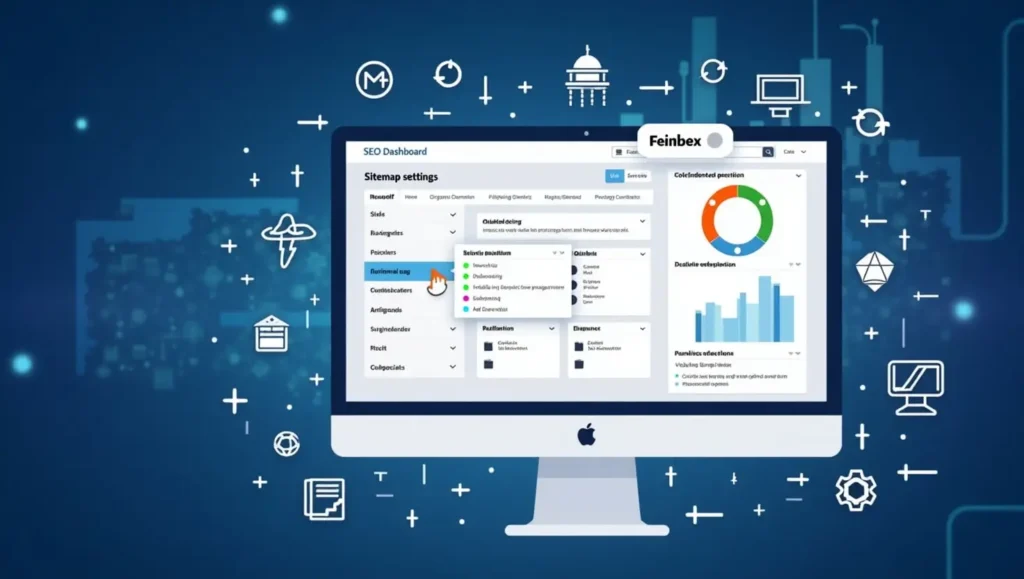In the world of SEO, understanding how search engines interact with your website is critical. While tools like Google Search Console provide valuable insights, they often lack the granularity needed to diagnose technical issues or optimize crawl efficiency. This is where Log File Analysis becomes essential.
Log files, generated by your web server, record every request made to your site, including those from search engine bots. By performing Log File Analysis, you can uncover hidden technical issues, optimize crawl budget allocation, and ensure your site is fully accessible to search engines. This process helps identify indexing problems, slow-loading pages, and unnecessary bot hits.
However, manually sifting through log files can be overwhelming. That’s where Python comes in—a powerful tool that automates Log File Analysis, saving time and providing actionable insights. Python can extract key data, visualize trends, and help improve website performance.
This blog is part of our Technical SEO with Python series, where we explore advanced strategies. In this installment, we’ll dive into Python’s role in logs file Analysis, offering expert insights and real-world applications.
Table of Contents
ToggleWhy Log File Analysis Matters for SEO
Log files are a goldmine of information for SEO professionals. Here’s why they’re so valuable:
- Crawl Behavior: Understand how search engine bots interact with your site.
- Crawl Budget Optimization: Identify pages that are wasting crawl budget.
- Technical Issues: Detect errors like 4xx and 5xx status codes that may hinder indexing.
- Content Prioritization: Ensure important pages are being crawled frequently.
By leveraging Python for log file analysis, you can transform raw data into actionable insights, helping you improve your site’s technical SEO performance.
Getting Started with Log File Analysis in Python
To analyze log files with Python, you’ll need to:
- Access Log Files: Download log files from your web server (e.g., Apache, Nginx).
- Parse Log Files: Extract relevant data using Python libraries.
- Analyze Data: Identify patterns, errors, and opportunities for optimization.
Step 1: Accessing Log Files
Most web servers store log files in a specific directory. Common formats include:
- Apache: access.log, error.log
- Nginx: access.log, error.log
You can download these files via FTP, SSH, or your hosting provider’s control panel.
Step 2: Parsing Log Files with Python
Python’s pandas library is ideal for parsing and analyzing log files. Here’s how you can get started:
Example: Parsing an Apache Log File
python
Copy
import pandas as pd
# Define the log file format
log_format = r'(?P<ip>\S+) \S+ \S+ \[(?P<date>.*?)\] “(?P<request>.*?)” (?P<status>\d+) (?P<size>\S+) “(?P<referrer>.*?)” “(?P<user_agent>.*?)”‘
# Load the log file into a DataFrame
log_file = ‘path/to/access.log’
df = pd.read_csv(log_file, sep=’ ‘, header=None, names=[‘ip’, ‘client’, ‘user’, ‘date’, ‘request’, ‘status’, ‘size’, ‘referrer’, ‘user_agent’])
# Convert the date format
df[‘date’] = pd.to_datetime(df[‘date’], format=’%d/%b/%Y:%H:%M:%S %z’)
# Filter for search engine bots
bots = [‘Googlebot’, ‘Bingbot’, ‘Slurp’]
df_bots = df[df[‘user_agent’].str.contains(‘|’.join(bots), case=False, na=False)]
print(df_bots.head())
Key Benefit: This script extracts and filters log entries for search engine bots, making it easier to analyze crawl behavior.
Step 3: Analyzing Log File Data
Once you’ve parsed the log file, you can perform various analyses to uncover insights.
Example: Identifying Most-Crawled Pages
python
Copy
# Group by requested URLs and count occurrences
most_crawled = df_bots[‘request’].value_counts().reset_index()
most_crawled.columns = [‘URL’, ‘Crawl Count’]
print(most_crawled.head(10))
Key Benefit: Helps you identify which pages are being crawled most frequently, allowing you to prioritize optimization efforts.
Example: Detecting Errors
python
Copy
# Filter for 4xx and 5xx status codes
errors = df_bots[df_bots[‘status’].astype(str).str.startswith((‘4’, ‘5’))]
error_summary = errors[‘status’].value_counts().reset_index()
error_summary.columns = [‘Status Code’, ‘Count’]
print(error_summary)
Key Benefit: Highlights pages with errors that may be hindering search engine access.
Advanced Techniques for Log File Analysis
For more advanced analyses, you can use Python to:
- Visualize Crawl Patterns: Use libraries like Matplotlib or Seaborn to create visualizations.
- Segment Data: Analyze crawl behavior by bot type, device, or time of day.
- Integrate with Other Data Sources: Combine log file data with Google Search Console or analytics data for a holistic view.
Example: Visualizing Crawl Frequency Over Time
python
Copy
import matplotlib.pyplot as plt
# Group by date and count crawls
crawl_frequency = df_bots.groupby(df_bots[‘date’].dt.date).size()
# Plot the data
plt.figure(figsize=(10, 5))
crawl_frequency.plot(kind=’line’)
plt.title(‘Crawl Frequency Over Time’)
plt.xlabel(‘Date’)
plt.ylabel(‘Number of Crawls’)
plt.show()
Key Benefit: Provides a clear visual representation of crawl patterns, helping you identify trends and anomalies.
Real-Life Applications of Log File Analysis
Case Study: Optimizing Crawl Budget
An e-commerce website used Python to analyze their log files and discovered that search engines were wasting crawl budget on low-priority pages (e.g., filtered product pages). By implementing noindex tags and optimizing their robots.txt file, they improved crawl efficiency and saw a 20% increase in indexed pages.
Expert Insight
According to Barry Schwartz, an SEO expert and journalist, “Log file analysis is one of the most underutilized tools in SEO. It provides a direct line of sight into how search engines interact with your site, enabling you to make data-driven decisions.”
Best Practices for Log File Analysis
- Regular Monitoring: Perform log file analysis regularly to stay on top of crawl behavior.
- Focus on Key Metrics: Prioritize metrics like crawl frequency, status codes, and bot activity.
- Automate Where Possible: Use Python scripts to automate data extraction and analysis.
- Combine with Other Data: Integrate log file data with tools like Google Search Console for a comprehensive view.
Conclusion
Log file analysis is a powerful yet often overlooked aspect of technical SEO. By leveraging Python, you can automate the process of extracting, analyzing, and visualizing log file data, uncovering insights that can drive significant improvements in your site’s performance.
As part of our Technical SEO with Python series, this blog highlights the importance of understanding and optimizing how search engines interact with your site. Whether you’re a beginner or an experienced professional, Python can help you unlock the full potential of log file analysis.
Next Steps: Start experimenting with the examples provided in this blog. Download your server logs, parse them with Python, and uncover insights that can transform your SEO strategy.



